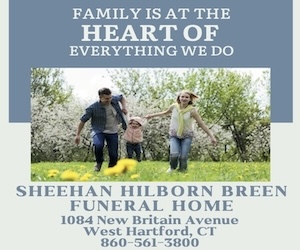When Southbury ousted the Nazis
By Cindy Mindell
SOUTHBURY – For 75 years, this small town has kept pretty quiet about how it prevented the pro-Hitler German-American Bund from building a training camp in its midst. The story caused a brief national stir in 1937, covered by the New York Times and reenacted for a “March of Time” newsreel. But then the U.S. entered World War II and the story faded away, tucked into the files at the Southbury Historical Society for seven decades.
This month, nearly 75 years to the day since the Bund was kicked out of town, Southbury is piping up, retelling its bit of extraordinary Connecticut history in a louder voice, with a community-wide series of commemorative events and the world premiere of a new documentary film.
In 1936, Nazi sympathizers in the U.S. organized the German American Bund, establishing at least 20 training camps in rural areas throughout the country and attracting some 25,000 active members. In 1937, with a camp already established in nearby Waterbury, the Bund purchased 178 acres in the Kettletown area of Southbury, then a farming community of just 1,200 residents.
On the Sunday before Thanksgiving, Rev. M. Edgar N. Lindsay of the South Britain Congregational Church and Rev. Felix Manley of Southbury Federated Church (now United Church of Christ) spoke out against the Bund from their respective pulpits. Their sermons made front-page news throughout the region, and the community quickly took action, forming United Americans (Against the German American Bund).
How the town blocked the Bund is the subject of “Home of the Brave: When Southbury Said No to the Nazis,” a documentary film produced under the auspices of the Southbury Historical Society that premiered on Nov. 18 at the Pomperaug High School in Southbury before an audience of nearly 1,000. A companion exhibition of memorabilia from 1937 will be on display through November.
The idea for the film began simmering in 1999, when former Southbury town clerk Joyce Hornbecker told the story to Chris Gardner of the Republican-American. Gardner wrote an article for the paper that year, and revisited the story five years later and again in 2007, on the 70th anniversary of the historic event.
“That’s when the organized Jewish community felt that we had an obligation to speak up,” says Rabbi Eric Polokoff of B’nai Israel of Southbury, who discussed programming ideas with then-regional director of the Anti-Defamation League (ADL), David Waren. B’nai Israel held a community-wide tribute event to thank the town and the two churches that spearheaded the 1937 campaign.

At the Nov. 18 premiere (l to r): Southbury First Selectiman Ed Edelson, Rabbi Eric Polokoff, and filmmaker Scott Sniffen
At its annual interfaith Thanksgiving service last year, community leaders realized that their town was just a year away from the 75th anniversary of the Bund incident. A commemoration committee came together, with participation from ADL and the Jewish Federation of Western Connecticut, the Town of Southbury and its historical society, local religious leaders, the Connecticut Community Foundation, and local businesses and community organizations.
“We realized that most people, including lifelong Southburians, didn’t know the story,” Polokoff says. “Nor should we expect them to: it hasn’t been taught in our schools, nor is it found on the U.S. Holocaust Memorial Museum or Yad Vashem websites. If we could get a documentarian to tell this story in an accessible and available way, where people could watch and be inspired, it would be heightened in people’s consciousness.”
After a competitive bidding process, the film project was awarded to Scott Sniffen, a Southbury-based filmmaker who had worked with Steven Spielberg’s Survivors of the Shoah Visual History Foundation. The film was funded with a leading gift from the Jewish Federation of Western Connecticut Foundation and Dr. Amy Goldman Fowler, and donations from the Connecticut Community Foundation, the Town of Southbury, and local individuals and businesses. Many community members dug through archives and searched online to piece the story together.
“From what we can find, this is the only place where there was such concerted effort of an entire town to say no to the Nazis,” Polokoff says. “When we started talking about ideas for the 75th anniversary, I don’t think any of us imagined that the process would bring out so much good in so many.”
Sniffen intertwines archival film footage, photos, and newspaper articles together with first-hand accounts told by town residents now in their 80s and 90s. “A gentleman in town whose father was a Nazi sympathizer in the ‘30s told me, ‘There were a bunch of farmers in Kettletown who were just bigoted and hated the Germans,” Sniffen says. I’ve got old letters from German Americans who wrote to the two Southbury ministers and the judge who tried the case saying, ‘Don’t let the Bund come in; I know what this group is all about.’ So this was not about the Germans, but about the Nazis. And at the end of the day, Southbury came out on the right end of history – and years before we knew what the Nazis were all about.”
As part of the 75th-anniversary tribute, the Town of Southbury Commemoration Committee Town is sponsoring an essay contest for Southbury middle and high school students.
DVD copies of the film are available. For more information: www.southburyhistory.org
Comments? Email cindym@jewishledger.com.







 Southern New England Jewish Ledger
Southern New England Jewish Ledger















